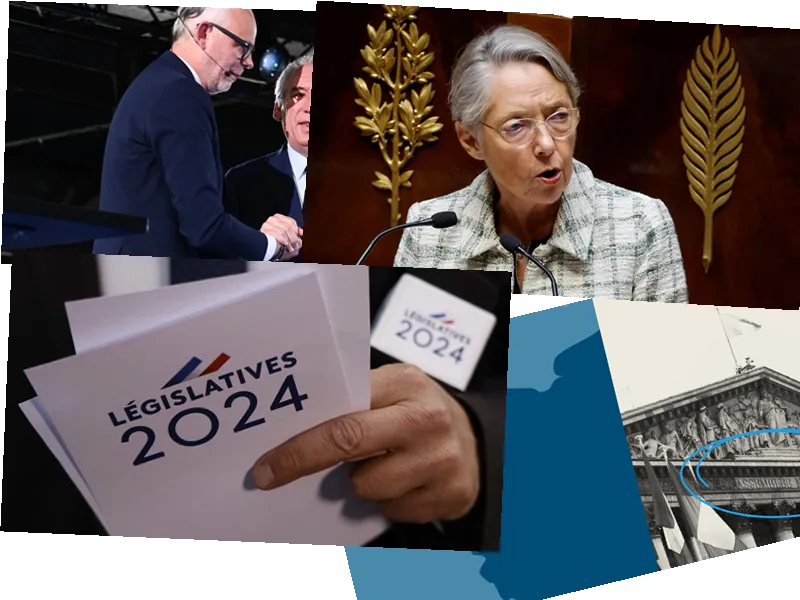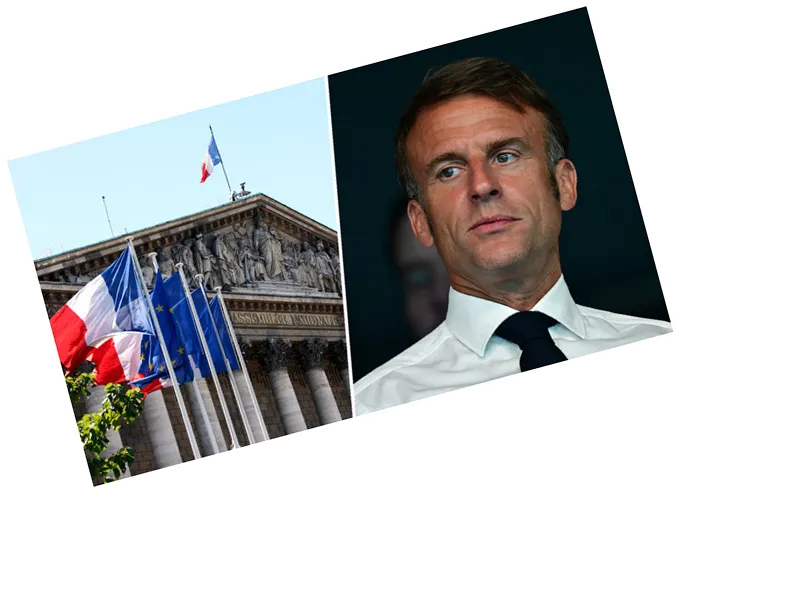Legislative Elections in France: A Deep Dive into the First Round Results
The recent legislative elections in France have showcased a significant shift in the political landscape. The National Rally (RN) and its allies have emerged as the front-runners, securing nearly 34% of the votes in the first round, according to provisional Ifop results. This strong performance positions the RN and its allies to potentially secure between 230 to 280 seats in the National Assembly, just shy of the absolute majority of 289 seats.
The New Popular Front (NFP), a coalition of rebels, socialists, communists, and ecologists, came in second with 28.1% of the votes. The outgoing presidential majority, led by Macron's Ensemble, was relegated to third place with 20.3% of the votes. The Republicans, divided between those supporting Éric Ciotti's alliance with the RN and the anti-Ciotti faction, secured 10.2% of the votes.
Key Players and Strategic Moves
Former Prime Minister Édouard Philippe acknowledged the challenges faced by the outgoing majority and emphasized the need to avoid polarization between extremes. He called for support from candidates across the political spectrum who oppose the extremes, from the social democratic left to the conservative right. Similarly, François Bayrou of MoDem highlighted the importance of alliances between Democratic and Republican candidates to counter the rise of the far-right.
In the sixth constituency of Calvados, former Prime Minister Élisabeth Borne qualified for the second round with 28.93% of the vote, trailing the RN candidate Nicolas Calbrix who secured 36.26%. Borne's electoral journey has been notable, having narrowly won her seat in 2022 while serving as Prime Minister.
The first round also saw a significant number of triangulars, with estimates suggesting between 285 and 315 constituencies could be affected. This surge is attributed to the sharp increase in voter participation compared to previous years and the polarized campaign centered around three main blocs: the RN, the NFP, and the presidential majority.
Regional Highlights and Voter Turnout
In the overseas territories, the RN's breakthrough was less pronounced. In Guadeloupe, the RN candidates Laurent Petit and Rody Tolassy qualified for the second round but trailed significantly behind the NFP candidates. Similarly, in Martinique, the RN candidate Grégory Roy-Larentry will contest the second round despite securing less than 10% of the votes in the first round.
The voter turnout was notably high, with participation rates close to 65%, marking a significant increase from previous elections. This high turnout has implications for the second round, scheduled for July 7, where the RN and its allies will aim to secure an absolute majority.
- The political landscape in France is undergoing a significant transformation, with the National Rally (RN) and its allies emerging as the dominant force in the first round of the legislative elections. Their strong performance, securing nearly 34% of the votes, positions them to potentially secure a substantial number of seats in the National Assembly.
- The New Popular Front (NFP) has also shown considerable strength, coming in second with 28.1% of the votes. This coalition of rebels, socialists, communists, and ecologists presents a formidable opposition to the RN and its allies.
- The outgoing presidential majority, led by Macron's Ensemble, has faced a significant setback, being relegated to third place with 20.3% of the votes. This decline highlights the challenges faced by the centrist bloc in the current political climate.
- The Republicans are experiencing internal divisions, with a faction supporting Éric Ciotti's alliance with the RN and another faction opposing it. This division has resulted in a modest performance, securing 10.2% of the votes.
- Former Prime Minister Édouard Philippe has called for a unified front against the extremes, urging support for candidates across the political spectrum who oppose the far-right and far-left. Similarly, François Bayrou of MoDem has emphasized the importance of alliances between Democratic and Republican candidates.
- The overseas territories have shown resilience against the RN's breakthrough, with the party struggling to gain significant traction in regions like Guadeloupe and Martinique. The voter turnout in these regions has been notably high, reflecting a strong engagement in the electoral process.






